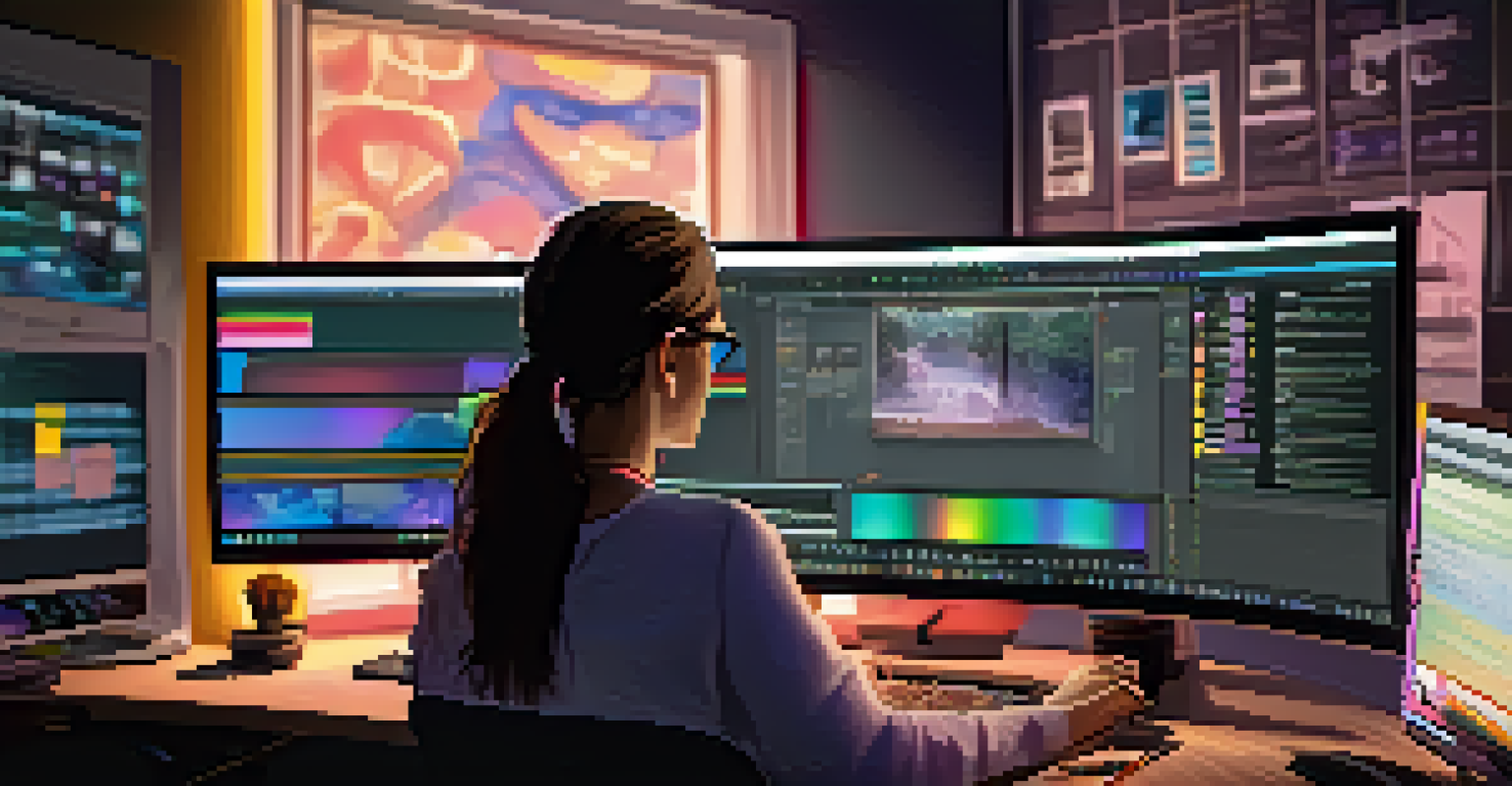Creating Engaging Learning Videos for Online Education

Understanding Your Audience for Effective Learning Videos
Before you hit record, it's crucial to know who your audience is. Understanding their age, interests, and learning preferences can help you tailor your content effectively. For instance, younger learners may respond better to interactive elements, while adults might appreciate a more straightforward approach.
The art of communication is the language of leadership.
Consider conducting surveys or engaging in discussions to gather insights about your audience. This information will guide you in creating content that resonates with them. The more connected your audience feels to the material, the more engaged they will be.
Remember, different audiences have varied expectations. By keeping their needs at the forefront of your planning, you can create videos that not only educate but also engage and inspire.
Setting Clear Learning Objectives for Your Videos
Every great learning video starts with clear objectives. Think of these as the roadmap that guides your content creation. By defining what you want your viewers to achieve by the end of the video, you can structure your content more effectively.

For example, if your objective is to teach a specific skill or concept, ensure that the video is organized in a way that builds up to that skill logically. This helps learners follow along and grasp the material without feeling overwhelmed.
Know Your Audience for Success
Understanding your audience's age, interests, and learning preferences is essential for creating engaging and relevant learning videos.
Having clear learning objectives also allows your audience to gauge their progress. They will appreciate knowing what they can expect to learn, making them more likely to stay engaged throughout the video.
Choosing the Right Format and Style for Your Content
The format and style of your video can make a significant difference in how engaging it is. Consider options like screencasts, animations, or on-camera presentations. Each format has its strengths, so choose one that aligns with your content and audience preferences.
Tell me and I forget. Teach me and I remember. Involve me and I learn.
For instance, if you're explaining complex concepts, animated videos can simplify and visualize those ideas, making them more digestible. On the other hand, if you're sharing personal experiences or insights, a more direct, on-camera approach might create a stronger connection with viewers.
Ultimately, the right format enhances the learning experience. Experiment with different styles to find what best engages your audience while effectively delivering your message.
Incorporating Visuals to Enhance Learning Engagement
Visual elements play a pivotal role in keeping viewers engaged. Consider integrating charts, graphs, images, and videos to illustrate your points clearly. These visuals not only break up the monotony of talking head footage but also reinforce the material being taught.
For example, if you're explaining a scientific concept, showing relevant diagrams can help viewers grasp the idea more quickly. Using engaging visuals also caters to different learning styles, allowing visual learners to thrive.
Set Clear Learning Objectives
Defining clear objectives serves as a roadmap, helping viewers understand what they will achieve and keeping them engaged throughout the video.
Just remember to balance visuals with your spoken content. Overloading your video with images can be distracting, so use them strategically to enhance, rather than overshadow, your main message.
Using Storytelling to Make Content More Relatable
Storytelling is a powerful tool in education, making content more relatable and memorable. By weaving anecdotes or real-life examples into your videos, you create a narrative that viewers can connect with emotionally. This connection can keep them invested in your content.
For instance, instead of merely presenting facts about a historical event, share a personal story or perspective related to that event. This approach can make the information more impactful and easier to understand.
Incorporating storytelling not only enhances engagement but also helps reinforce learning. When viewers can relate to the material, they are more likely to remember and apply what they've learned.
Engaging Your Audience with Interactive Elements
Interactive elements can significantly boost viewer engagement in your learning videos. Consider incorporating quizzes, polls, or discussion prompts that encourage viewers to participate actively. This interaction breaks the passive viewing experience and turns it into a more dynamic learning opportunity.
For example, you could pause the video and prompt viewers to reflect on a question or take a quick quiz related to the content. This not only reinforces learning but also allows learners to gauge their understanding in real-time.
Incorporate Interactive Elements
Adding quizzes and discussion prompts transforms passive viewing into an engaging, interactive learning experience that enhances retention.
By fostering interaction, you create a sense of community among viewers. They are more likely to feel engaged and invested in the learning process, leading to better retention of information.
Editing and Producing High-Quality Videos for Impact
Once you have your content recorded, the editing process is where the magic happens. Quality editing can elevate your videos, making them more polished and professional. Pay attention to pacing, audio quality, and visual consistency to create a seamless viewing experience.
Consider using editing software to cut out any unnecessary content, add transitions, and overlay text or graphics that reinforce your message. A well-edited video will not only look better but will also keep viewers engaged and focused on the content.

Remember, high-quality production reflects your dedication to providing a valuable learning experience. Investing time in editing can significantly enhance the overall impact of your educational videos.
Promoting Your Learning Videos for Maximum Reach
Creating engaging learning videos is just the first step; promoting them effectively is equally important. Utilize social media platforms, educational forums, and email newsletters to share your content with a wider audience. Engaging with your community can also drive traffic to your videos.
Consider collaborating with influencers or other educators in your niche to expand your reach. They can help amplify your message and introduce your videos to their followers, creating more opportunities for engagement.
By actively promoting your learning videos, you ensure that your valuable content reaches those who need it most. Don’t underestimate the power of a well-planned promotional strategy in maximizing your impact.